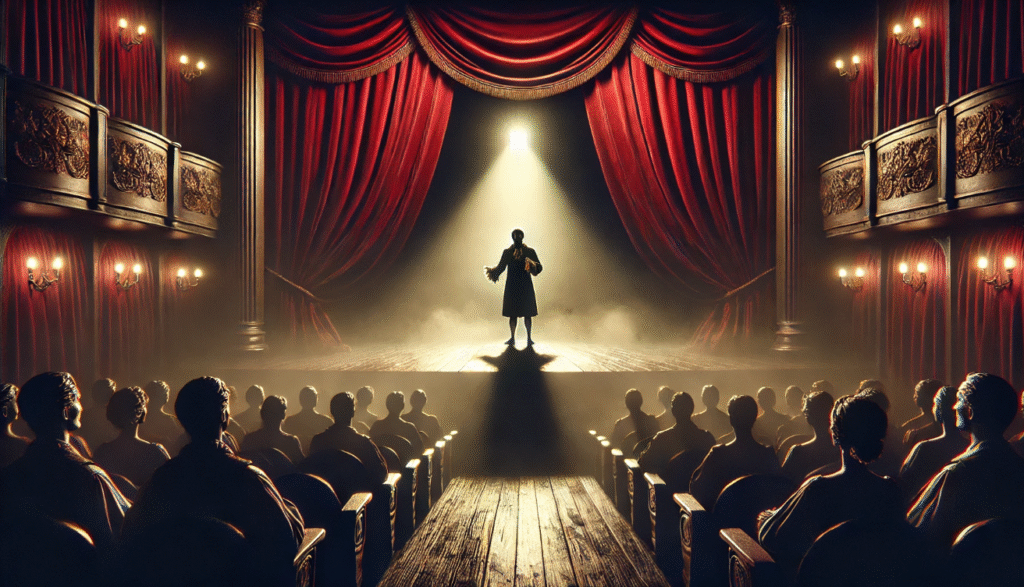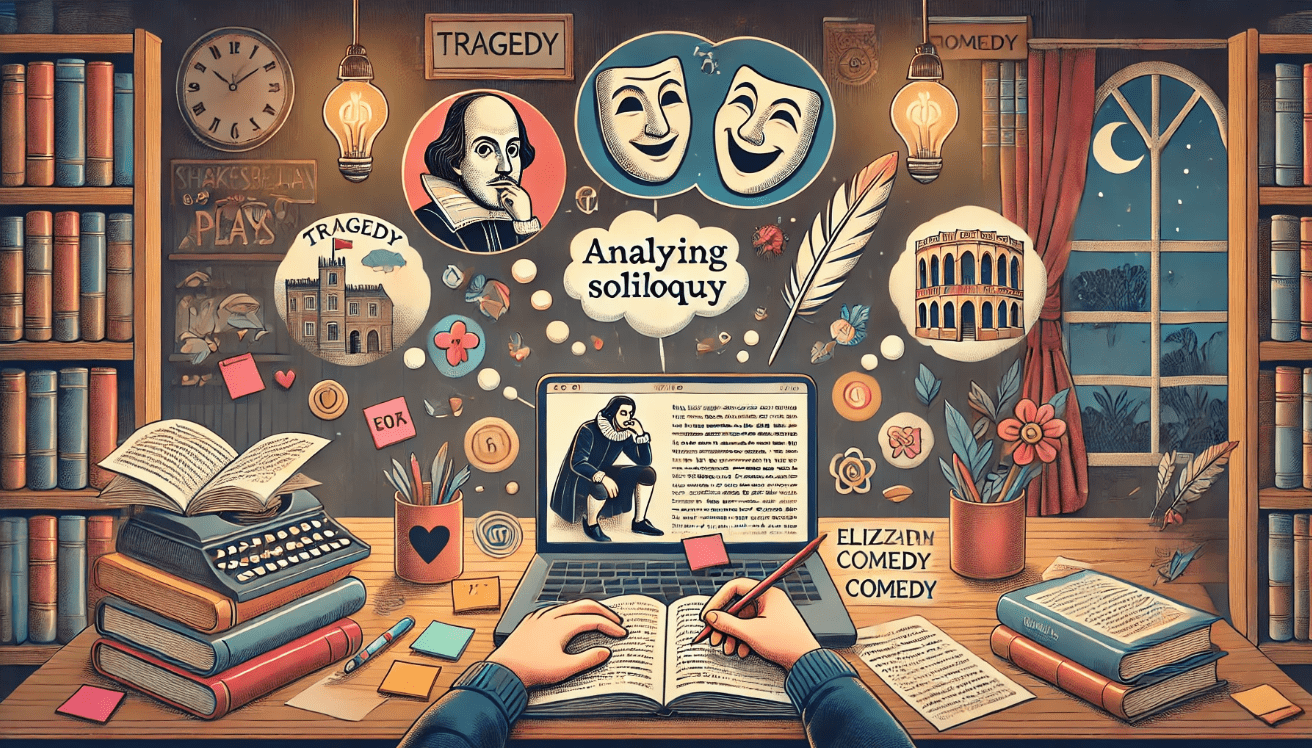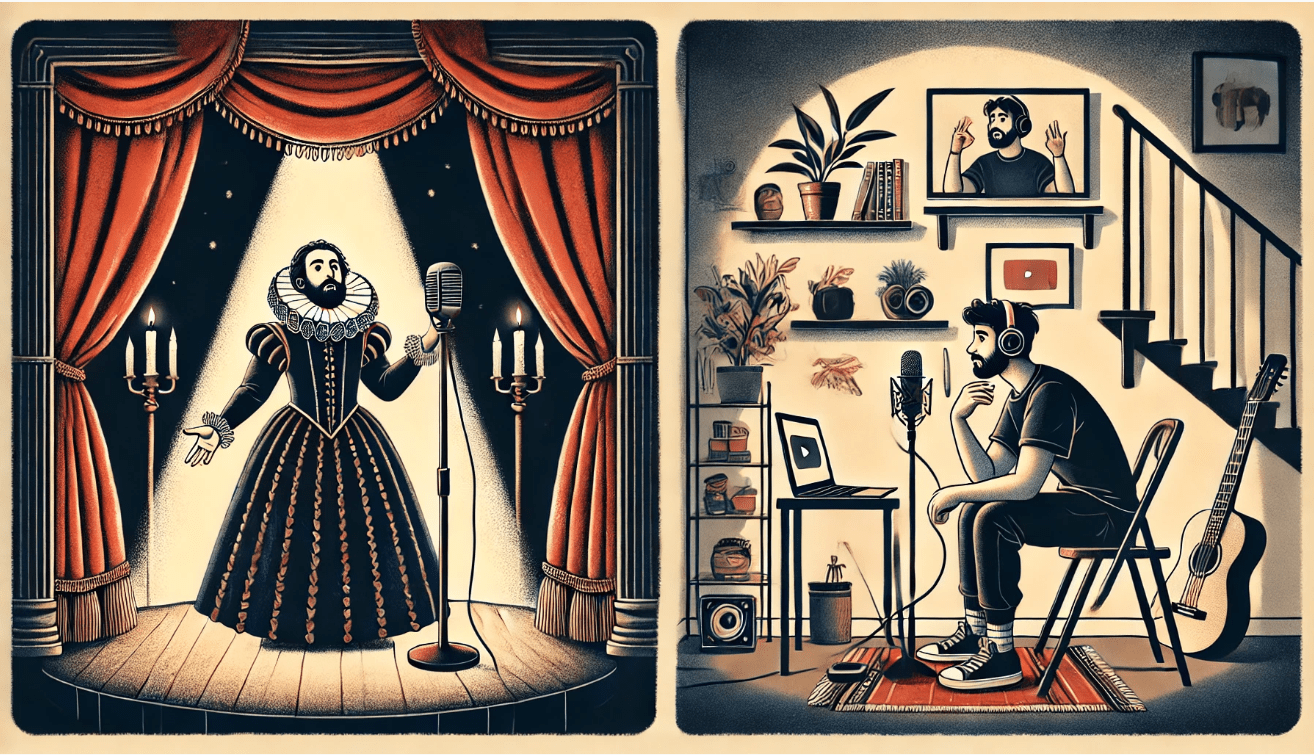
How Soliloquies Shape Character Decisions in Literature: Unlocking Their Impact
Ever wondered what drives a character to make life-changing choices in your favorite play? 🎭 Soliloquies—those gripping moments when characters bare their souls alone on stage—hold the key to unlocking the impact of soliloquies on character decisions. Whether you’re a student struggling with Shakespeare, an educator teaching Hamlet, or a literature lover craving deeper insights, this article demystifies how soliloquies reveal inner conflicts and shape pivotal moments. Get ready to discover practical tools to analyze these monologues, boost your literary confidence, and connect with timeless stories like never before! 😊 Keep reading to transform your understanding.
Table of Contents
Toggle01.What Are Soliloquies and Why Do They Matter? 😊
Ever heard a character in a play spill their deepest thoughts alone on stage? That’s a soliloquy! A soliloquy is when a character speaks their inner feelings aloud, with no one else around, giving you a front-row seat to their mind. Think Hamlet pondering “To be or not to be.” 🎭

Why do they matter? Soliloquies reveal what characters really think, showing their fears, dreams, and decisions. They’re like a secret diary that drives the story forward.
- Key Roles:
- Uncover true motivations (e.g., Macbeth’s ambition).
- Show emotional struggles that shape choices.
- Connect you to the character’s heart.
02.How Soliloquies Influence Character Decisions 🎭
Soliloquies are like peeking into a character’s mind, revealing how they make game-changing choices. They show the inner battles that drive actions, making them key to understanding the impact of soliloquies on character decisions. Let’s break it down!
A Window to the Mind: Soliloquies let characters voice their deepest thoughts. In Hamlet, Hamlet’s “To be or not to be” speech shows him wrestling with life and revenge, leading to his cautious approach. This inner debate shapes his every move.

Real Examples:
- Macbeth (Shakespeare): Macbeth’s soliloquies expose his ambition and guilt, pushing him toward murder and madness. His “Is this a dagger” speech reveals his decision to kill Duncan.
- Othello (Shakespeare): Iago’s solo speeches unveil his scheming, driving his manipulative choices that destroy others.
- Julius Caesar (Shakespeare): Brutus’ soliloquy about Caesar’s ambition cements his decision to join the conspiracy.
How They Work:
- Reveal Conflict: Characters weigh options, like Hamlet debating revenge or inaction.
- Show Motivation: They clarify why characters act, like Macbeth’s ambition overriding his morals.
- Build Drama: Soliloquies make you root for (or against) characters as their choices unfold.
03.Practical Tips for Analyzing Soliloquies 📝

Want to crack the code of soliloquies and understand the impact of soliloquies on character decisions? Analyzing these solo speeches can feel tricky, but with the right steps, it’s totally doable! Here’s a beginner-friendly guide to help students, educators, and literature fans dive into soliloquies with confidence. 😊
Why Analyze Soliloquies?
They reveal a character’s deepest thoughts, making them key to nailing essays, class discussions, or simply enjoying a play more.
Step-by-Step Guide:
- Check the Context: What’s happening before the soliloquy? For example, in Hamlet, Hamlet’s “To be or not to be” follows his grief and suspicion about his father’s death.
- Break Down the Language: Look for vivid words, metaphors, or tone. In Macbeth, the “dagger” imagery in “Is this a dagger I see before me?” shows his guilt and hesitation.
- Track Emotional Shifts: Notice how the character’s mood changes. Lady Macbeth’s sleepwalking soliloquy shifts from guilt to despair, revealing her unraveling mind.
- Link to Decisions: Ask how the soliloquy leads to action. Hamlet’s musings push him to stage a play to test the king’s guilt.
Beginner Tools:
- Use annotated texts or sites like SparkNotes for background info.
- Create a “soliloquy map”: Jot down emotions, themes, and decisions in a chart.
- Read the speech aloud to feel its rhythm and tone.
04.Real-Life Applications of Understanding Soliloquies 🌟
Why bother decoding soliloquies? Understanding the impact of soliloquies on character decisions isn’t just for literature buffs—it has real-world benefits! Whether you’re a student, teacher, or theater fan, analyzing soliloquies builds skills you can use in everyday life. Here’s how this knowledge pays off! 😊
For Students: Soliloquies make essays and exams easier. By spotting how Hamlet’s inner debates lead to action, you’ll write sharper analyses and boost your grades.
For Educators: Teaching soliloquies helps students think critically. Use examples like Macbeth’s guilt-driven speeches to spark discussions about choices and consequences.
For Literature Fans: Love plays or movies? Recognizing soliloquy-like moments (like voiceovers in films) deepens your enjoyment of stories and characters.
Practical Benefits:
- Sharpen Critical Thinking: Decoding a character’s inner conflict, like Brutus in Julius Caesar, trains you to analyze complex problems.
- Build Empathy: Understanding characters’ struggles, like Lady Macbeth’s guilt, helps you relate to others’ emotions.
- Improve Communication: Soliloquies’ persuasive language (e.g., Iago in Othello) teaches you to craft compelling arguments.
5. Common Mistakes to Avoid When Studying Soliloquies 😬
Studying soliloquies can be incredibly rewarding—but only if done right. Many students and readers fall into common traps that prevent them from fully understanding the character’s voice and the deeper meaning behind the monologue. Here’s what to watch out for:
1. Taking the Words at Face Value
Soliloquies are often packed with symbolism, irony, and internal conflict. Don’t assume the character means everything literally. Dig deeper into their emotions, fears, and motives. Ask yourself:
What’s really going on beneath the surface?
2. Ignoring the Character’s Arc
A soliloquy isn’t just a speech—it’s a snapshot of transformation. Skipping the context of how the character got there (and where they go afterward) leads to shallow analysis.
👉 Tip: Always place the soliloquy within the character’s larger journey.
3. Overlooking Tone and Emotion
Reading in a monotone voice or skipping over emotion strips the soliloquy of its impact. Try reading it out loud, paying attention to tone shifts, pauses, and emotional weight.
🎭 This helps reveal hidden fears, desires, or contradictions.
4. Focusing Only on Famous Lines
It’s tempting to zero in on iconic phrases (like “To be, or not to be”)—but don’t stop there! Every line in a soliloquy builds meaning.
🔍 Explore how the structure, pacing, and word choices build toward those famous moments.
5. Neglecting Historical and Cultural Context
Shakespeare and other playwrights often spoke to their times. If you ignore the social, political, or philosophical context, you miss the deeper significance of the character’s thoughts.
💡 Even a quick Google search on the play’s background can unlock powerful insights.
6. How Soliloquies Enhance Modern Storytelling 🎬📖
Soliloquies aren’t just relics of Shakespeare’s stage—they’re alive and well in today’s storytelling. Modern writers use the same technique (in new forms) to bring audiences closer to their characters and deepen emotional impact. Let’s break down how soliloquies still shape stories today—and how you can spot them! 👀

🎙️ 1. They Reveal Inner Conflict
In books, movies, and TV shows, characters often speak their thoughts aloud, or we hear their internal monologue through narration or voice-over. This modern soliloquy helps the audience:
- Understand what the character really thinks
- See the tension between public actions and private thoughts
- Watch decisions unfold in real time
Example: In Breaking Bad, Walter White’s private reflections show how he justifies his descent into crime—something we might not get from his dialogue alone.
🎥 2. They Create Emotional Intimacy
Soliloquy-style narration pulls us inside the character’s head. Whether it’s a diary entry, a podcast voice-over, or a vlog, we feel like we’re being let in on a secret. 🤫
This builds trust, empathy, and a deeper connection to the story.
Think: Fleabag breaking the fourth wall to speak directly to the camera—pure soliloquy energy!
✍️ 3. They Drive Key Decisions
Writers often use soliloquies to foreshadow big turning points. When a character is stuck, confused, or weighing options, that internal moment reveals their logic, emotions, or fear.
You can literally watch them make a decision—before they act on it.
👉 This adds depth and makes their choices feel more earned.
🧠 4. They Give Clues to Theme and Meaning
Modern soliloquies often echo the story’s big ideas. A character’s inner dialogue can highlight major themes like identity, morality, or justice—without having to spell it out for the audience.
Look for:
- Repeated phrases or questions
- Shifts in tone or mindset
- Hidden fears or desires
These details can unlock what the story is really about.
✨ 5. They Inspire Writers and Creators
Whether you’re a student, writer, or filmmaker, understanding soliloquies can level up your storytelling. Try adding a reflective moment in your own writing where a character:
- Talks to themselves
- Questions their motives
- Reveals a secret no one else knows
🎯 It’s a powerful way to deepen character development and plot.
07.The Lasting Power of Soliloquies 🎭✨

Soliloquies are more than dramatic speeches—they’re a direct line into a character’s soul. Whether it’s Hamlet questioning existence or a modern TV character debating a life-changing decision, soliloquies reveal the why behind a character’s actions.
They help us:
- Understand deeper motivations 🤔
- Witness emotional turning points 💔
- Connect with characters on a personal level ❤️
For students, writers, and readers alike, studying soliloquies is a powerful way to unlock character development, story structure, and emotional impact. When used well, they don’t just move the plot forward—they make us feel it.
Frequently Asked Questions (FAQs)
1. What is a soliloquy in literature?
A soliloquy is a speech where a character speaks their thoughts aloud, usually when they’re alone on stage. It reveals their inner feelings, conflicts, and decisions, giving the audience a deeper understanding of their mindset.
2. How do soliloquies affect character decisions in a story?
Soliloquies show what a character is truly thinking, often before making a big choice. They help us understand why a character acts a certain way, even if they don’t say it to others in the story.
3. Why are soliloquies important in understanding character development?
Soliloquies reveal emotional struggles, doubts, and personal growth that might not be obvious through dialogue or action alone. They let us see how characters change from the inside out.
4. Are soliloquies only found in plays like Shakespeare’s?
No. While soliloquies are common in classic plays, modern stories use similar techniques—like voice-overs, inner monologues, or direct-to-camera moments—to show a character’s thoughts.
5. What’s the difference between a soliloquy and a monologue?
A soliloquy is a character talking to themselves (or the audience) alone, sharing private thoughts. A monologue is a longer speech directed at other characters, usually as part of a conversation or speech.
6. How can I analyze a soliloquy effectively?
Start by identifying the character’s emotions, what decision they’re facing, and how their thoughts change throughout the speech. Pay attention to tone, word choice, and the overall message being revealed.
7. What are some famous examples of soliloquies in literature?
Some well-known soliloquies include Hamlet’s “To be, or not to be”, Macbeth’s “Is this a dagger?”, and Juliet’s “Gallop apace”. These speeches offer deep insight into the characters’ fears, doubts, and desires.
8. How can understanding soliloquies help with writing or storytelling?
Studying soliloquies can teach you how to build emotional depth and believable character choices. They’re a great tool for writers to explore internal conflict and make characters more relatable.
